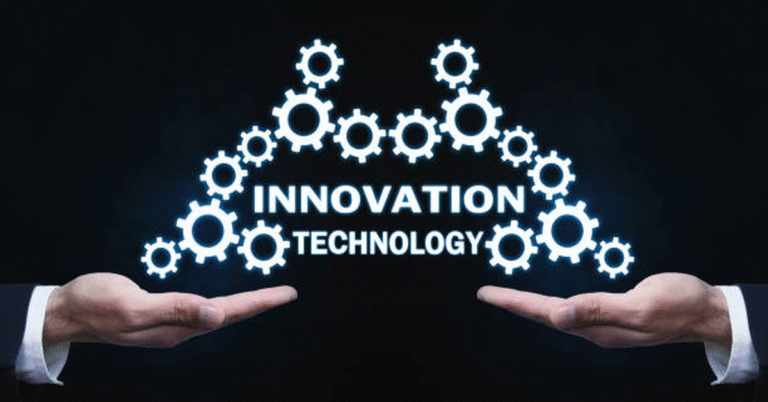
Technology is a constantly evolving domain, and every decade introduces concepts, systems, and frameworks that push the limits of innovation. One such emerging idea is Erome Technology. While it may not yet be a household term, Erome Technology is shaping conversations about integration, efficiency, and futuristic development across industries.
At its core, Erome Technology represents an approach to combining digital transformation with adaptive systems that can respond to complex business and social challenges. Much like how artificial intelligence, cloud computing, and blockchain once began as niche innovations before becoming mainstream, Erome Technology signals a shift toward a more interconnected, adaptive, and sustainable model of technology deployment.
In this article, we will explore the fundamentals of Erome Technology, its design principles, potential applications, benefits, risks, and where it stands in the larger ecosystem of modern innovations.
What is Erome Technology?
Erome Technology can be understood as a framework of digital solutions that emphasizes integration, adaptive intelligence, and user-centric functionality. Unlike traditional tools that focus on solving one problem at a time, Erome Technology aims to unify different components—hardware, software, and user data—into one dynamic ecosystem.
Key features that define Erome Technology include:
- Adaptive Integration – Seamlessly combining existing systems and emerging technologies.
- User-Centric Focus – Placing usability and accessibility at the forefront.
- Scalability – Expanding from small-scale applications to enterprise-level deployment without redesign.
- Efficiency-Driven Design – Minimizing wasted resources and improving system productivity.
In short, Erome Technology is not a single tool but a philosophy of building and using technology that grows, adapts, and responds intelligently to modern challenges.
Core Principles of Erome Technology
Like any technology framework, Erome Technology is built on principles that make it unique and effective.
| Principle | Description | Practical Example |
|---|---|---|
| Interconnectivity | Systems should communicate and share data seamlessly. | Linking healthcare devices to a patient’s mobile health app. |
| Adaptability | Technology must evolve with new requirements. | Retail software adjusting to online and offline consumer behavior. |
| Efficiency | Every feature should maximize time and cost savings. | Smart warehouses using automation to reduce logistics delays. |
| Accessibility | Tools should be usable by all demographics. | Voice-based assistants for elderly or visually impaired users. |
| Security | Strong protection of user data and transactions. | Encrypted cloud storage with multi-factor authentication. |
How Erome Technology Differs from Traditional Systems
Traditional systems are often static—designed to perform one set of tasks with limited flexibility. In contrast, Erome Technology:
- Bridges hardware and software seamlessly.
- Provides dynamic responses based on data feedback.
- Focuses on continuous improvement rather than fixed models.
For example, where a traditional customer management tool stores client data, an Erome Technology-powered tool would analyze that data, predict behaviors, and recommend strategies automatically.
Applications of Erome Technology Across Industries
Erome Technology has versatile applications. Let’s explore how it influences different sectors.
1. Healthcare
- Remote monitoring of patients.
- Predictive analysis for disease outbreaks.
- AI-assisted diagnostics.
2. Finance
- Fraud detection with adaptive learning.
- Automated investment strategies.
- Transparent auditing systems.
3. Education
- Personalized learning modules.
- Virtual classrooms integrated with real-time analytics.
- Digital tools for accessibility in inclusive education.
4. Manufacturing
- Smart factories with automated quality control.
- Real-time tracking of supply chains.
- Predictive maintenance of machinery.
5. Public Services
- Smart cities infrastructure.
- Traffic monitoring and adaptive control.
- Citizen-focused mobile platforms.
Benefits of Erome Technology
The impact of Erome Technology is multidimensional.
| Benefit | Explanation |
|---|---|
| Efficiency | Automates repetitive tasks, freeing human resources for higher-level work. |
| Cost Reduction | Reduces overhead through optimized processes. |
| Accuracy | Improves decision-making with predictive data. |
| Scalability | Easily grows to meet new demands. |
| Security | Enhances trust with encryption and user control. |
By adopting Erome Technology, businesses can simultaneously enhance productivity while providing a better end-user experience.
Challenges of Erome Technology
No technology is without its hurdles. Erome Technology also faces challenges:
- Complex Implementation – Requires technical expertise and resources.
- High Initial Investment – Advanced tools demand upfront costs.
- Security Risks – The more integrated a system, the higher the potential vulnerability.
- User Training – Users must adapt to new workflows and interfaces.
- Regulatory Compliance – Different countries impose different rules on technology use.
Erome Technology vs. Other Innovations
To better understand where Erome Technology fits, let’s compare it with related technologies.
| Aspect | Erome Technology | AI | Blockchain | Cloud Computing |
|---|---|---|---|---|
| Primary Goal | Integration + Adaptability | Intelligent automation | Secure distributed ledgers | Remote data hosting |
| Strength | Combines multiple innovations | Learning + prediction | Transparency + security | Scalability + storage |
| Limitation | Complexity of adoption | Data bias risk | Energy consumption | Internet dependency |
| Best Use | Holistic transformation | Decision-making | Financial/security apps | Multi-device access |
The Future of Erome Technology
The future holds promising developments for Erome Technology:
- Integration with AI and IoT – Smart devices communicating intelligently with minimal human intervention.
- Expansion into Green Tech – Optimizing energy consumption and supporting sustainability.
- Mainstream Business Adoption – From small businesses to large enterprises.
- Enhanced Personalization – Hyper-personalized apps, services, and tools.
- Global Standards – Development of universal frameworks for Erome-based solutions.
As industries prioritize sustainability and efficiency, Erome Technology could become a cornerstone of digital transformation.
Practical Example: Erome Technology in Smart Cities
To visualize how Erome Technology works, consider its role in smart cities.
| Feature | Traditional Approach | Erome Approach |
|---|---|---|
| Traffic Control | Fixed signal timings | Adaptive signals responding to real-time traffic |
| Energy | Standard grids | Smart grids distributing power efficiently |
| Waste Management | Scheduled collection | IoT sensors detecting fill levels |
| Public Safety | Manual monitoring | AI-based surveillance and prediction |
This shows how Erome Technology transforms ordinary services into adaptive, intelligent systems that save resources and improve quality of life.
Key Lessons for Businesses
- Adopt Gradually – Start with small-scale Erome solutions before scaling up.
- Invest in Training – Ensure teams understand new systems.
- Focus on Security – Protect integrated data across platforms.
- Collaborate with Experts – Partner with tech specialists for smoother implementation.
- Monitor ROI – Measure efficiency, cost savings, and user satisfaction regularly.
Conclusion
Erome Technology is not just another trend—it is a framework for holistic integration in the digital world. By merging adaptability, interconnectivity, and user-centric design, it creates opportunities for industries to improve efficiency, cut costs, and enhance user experiences. While challenges exist, the long-term benefits make it a promising avenue for enterprises, governments, and individuals seeking digital transformation.
As we look ahead, the relevance of Erome Technology will only grow, making it a critical area for developers, businesses, and policymakers alike to understand and implement.
FAQs
1. What is Erome Technology in simple terms?
It is a framework that integrates multiple technologies into a single adaptive and user-focused ecosystem for better efficiency and usability.
2. Which industries benefit most from Erome Technology?
Healthcare, finance, education, manufacturing, and public services currently see the biggest advantages.
3. What makes Erome Technology different from AI or cloud computing?
While AI and cloud are specific technologies, Erome Technology is a broader integration framework combining them and more.
4. Is Erome Technology expensive to implement?
Initial costs can be high, but long-term savings from efficiency and automation often outweigh early investments.
5. What is the future of Erome Technology?
It will expand into smart cities, sustainability, IoT integration, and enterprise-wide digital transformation.






